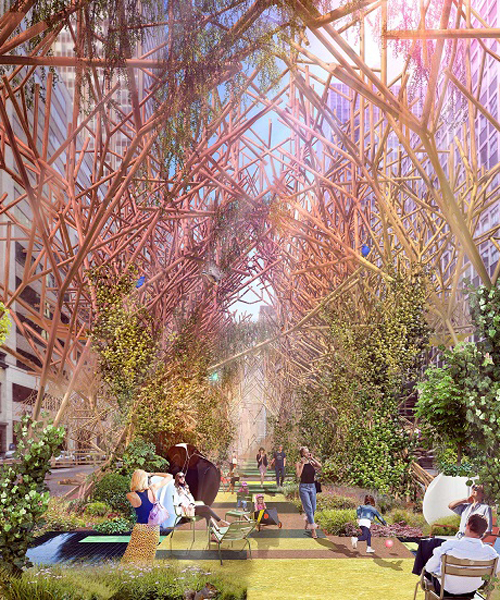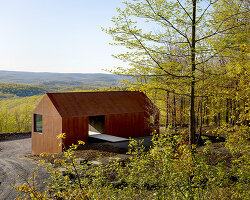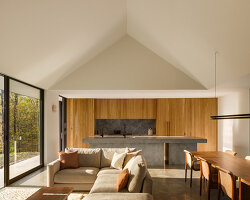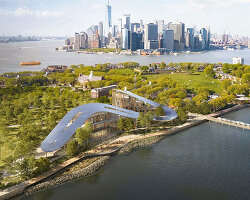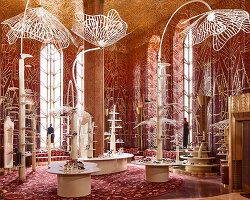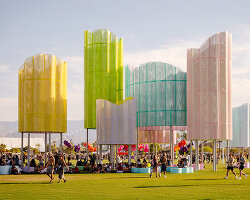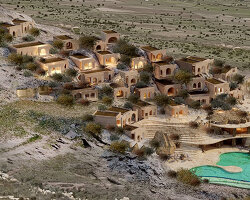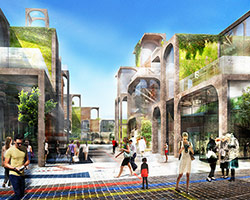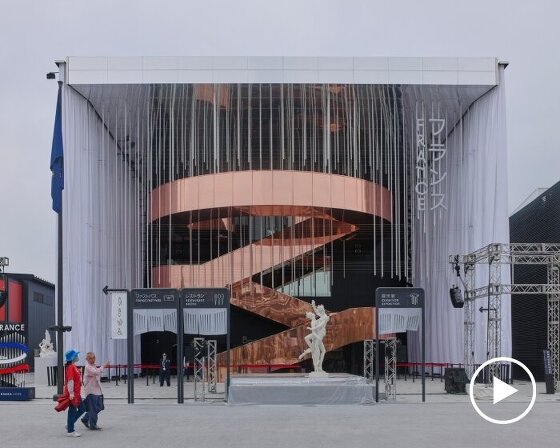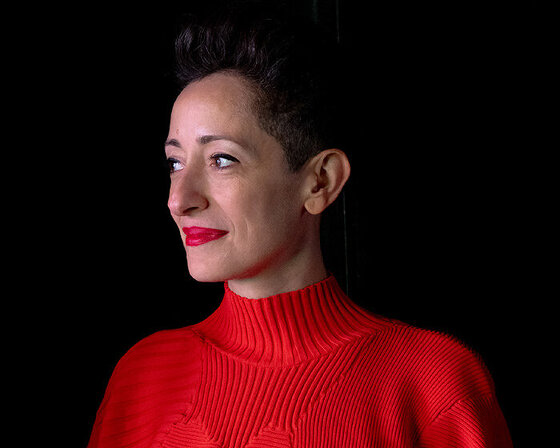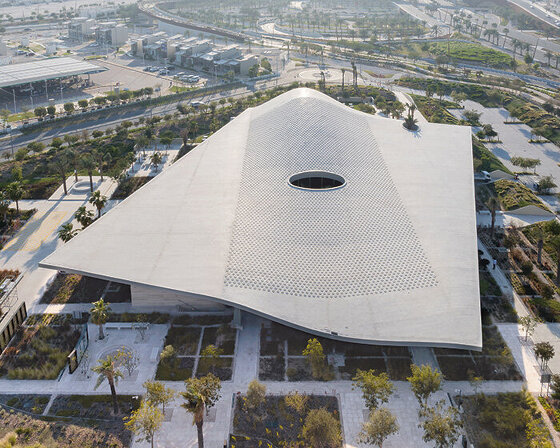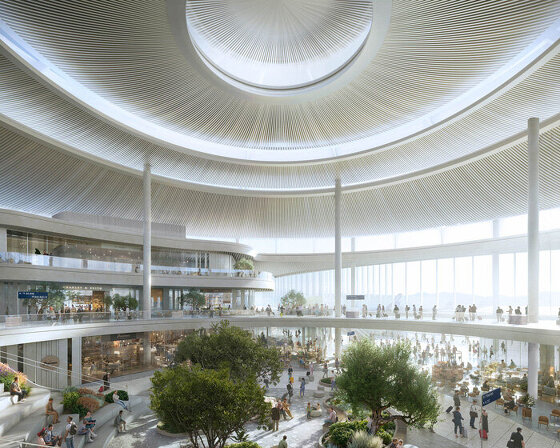the ‘park avenue park’ proposal calls for the creation of a new natural landscape for park avenue in new york city based on the topographical and ecological features of a savanna. GAD and chelsea atelier’s design is based on the implementation of a biophilic architecture strategy intended to take advantage of the genetic predisposition of humans to landscape topography in general and the savanna in particular. the park avenue mixed woodland reflects a grassland ecosystem, which has been prevalent on the eastern seaboard of north america as an endemic natural environment up until to the european discovery of the continent.
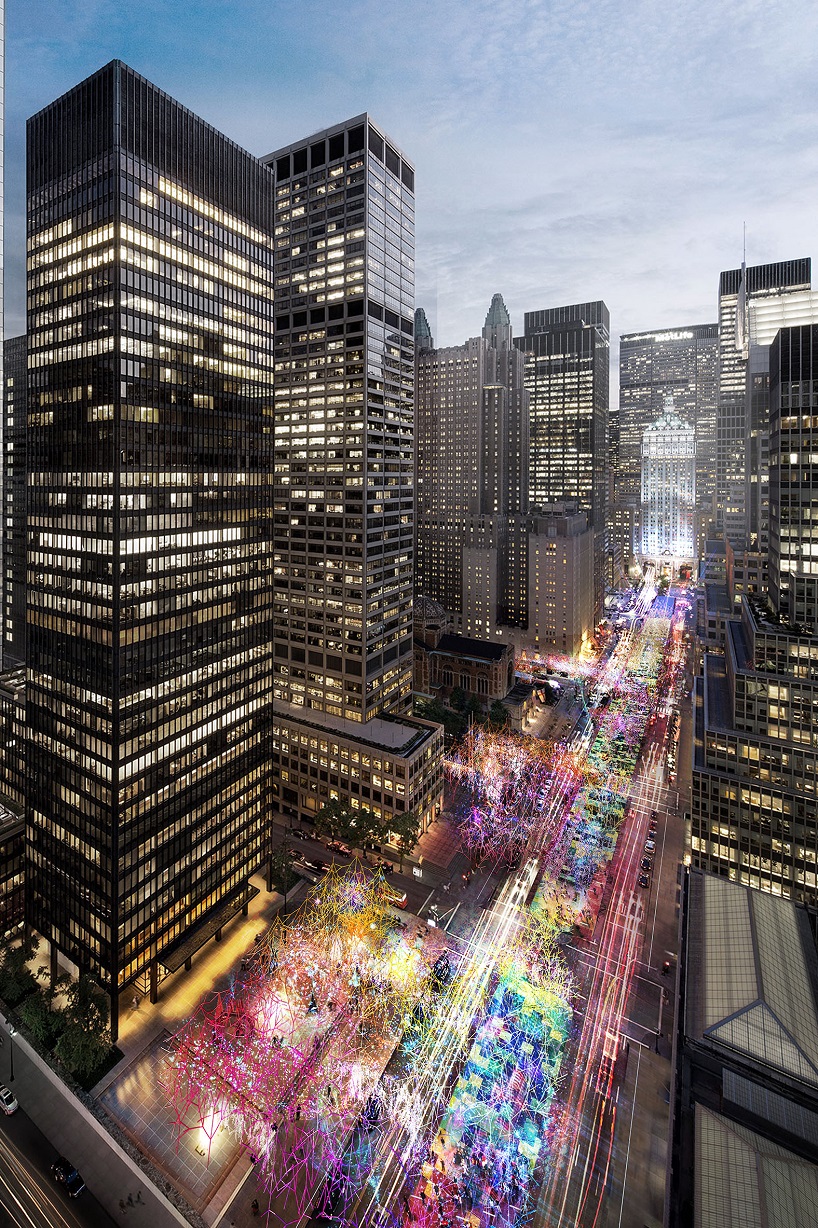
a new natural landscape for park avenue based on the topographical and ecological features of a savanna
GAD and chelsea atelier’s aim is to take the park avenue median footprint and widen it to generate a new natural endemic savanna environment intended to weave nature into the everyday life of manhattan based on biophilic design principles. the ‘park avenue park’ represents for the project team an optimal combination of natural forms adaptable to an urban setting while providing open spaces for a variety of community functions such as walking, eating, rest and relaxation. as such, the design team has used the continuous canopy of the trees to cover a free space underneath dotted by natural landscape elements and social spaces.
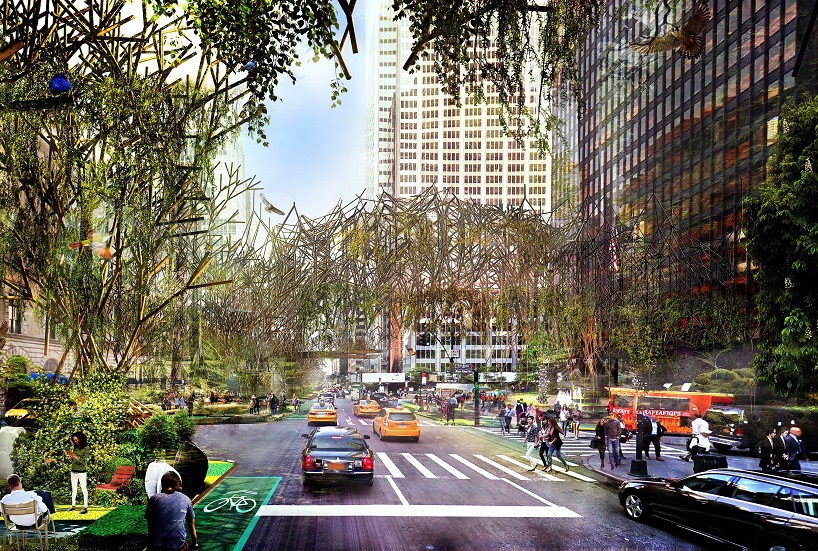
the design team has used the continuous canopy of the trees to cover a free space underneath
the main feature of this new natural environment will be a new man-made ‘forest’ consisting of a large tree-like canopy in structurally engineered bamboo derived from a complex 3-dimensional pattern that redefines the idea of nature in cities. the visual appearance of this canopy on the urban horizon line is designed based on a fractal dimension of 1.3-1.5 reflecting the savanna profile and proven to reduce stress in humans. the experience of the outdoors and connection to nature will be achieved through the geometry complexity of the forest canopy pattern produced in resilient self-supporting structural bamboo in natural tones.

a new man-made ‘forest’ consisting of a large tree-like canopy in structurally engineered bamboo
this primary contiguous canopy is combined with a restoration of flora and fauna endemic to eastern manhattan at the street level. limited by the impossibility of creating a real forest on park avenue, the designers have instead decided to propose a hybrid tree-like canopy in this structural bamboo that allows the team to create a flowing forest covering of a lower public space with numerous functions for the local community at street level while importantly providing a natural habitat for birds and insects.
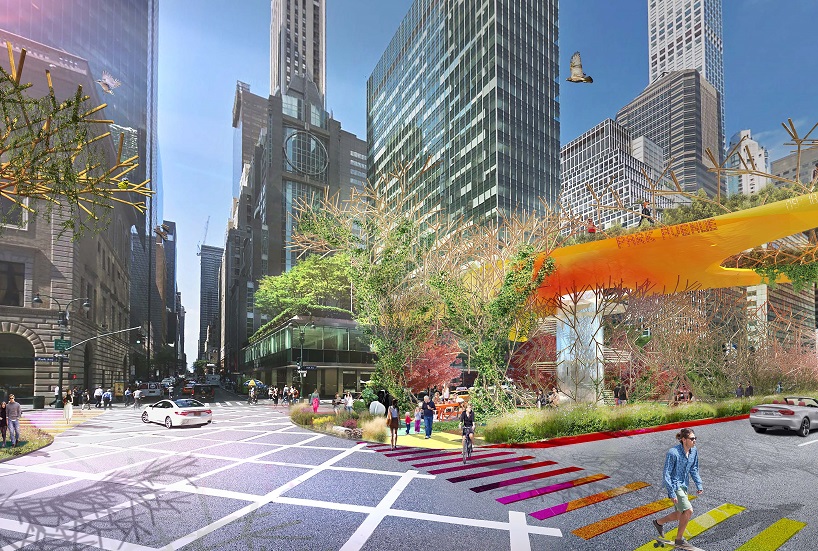
allows the team to create a flowing forest covering of a lower public space with numerous functions
the complex tree-like forms generating a pattern that reflects light and shadow will visually engage visitors during the day and provide a vibrant light display at night. the design team believes that cities need a strong introduction of nature and ecosystems which has led the project team to this design driven by the direct and analogous use of natural materials and forms as biophilic design.
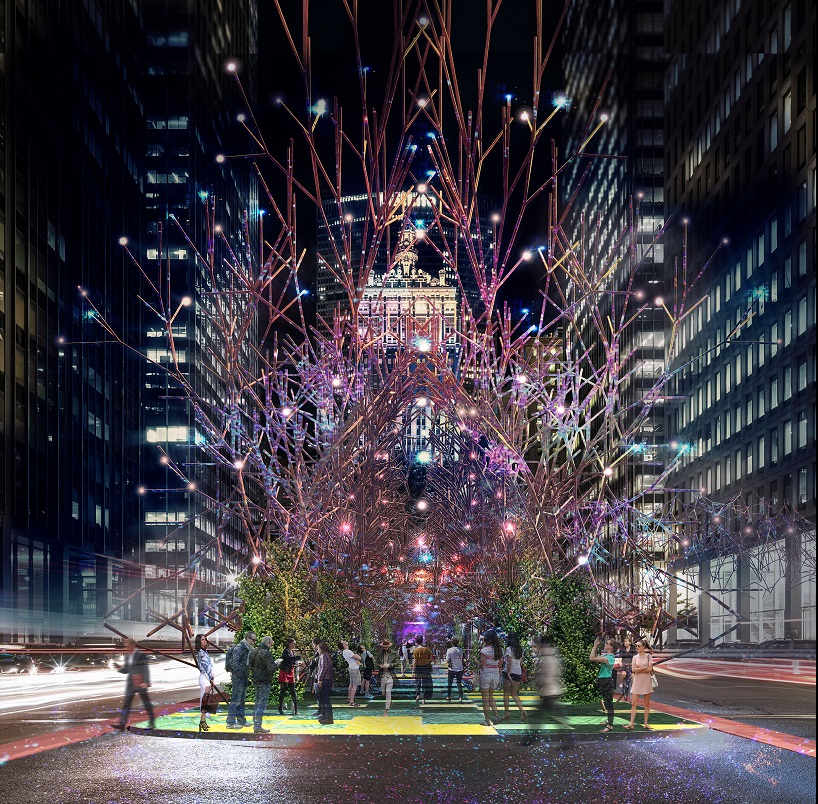
tree-like forms visually engage visitors during the day and provide a vibrant light display at night

park avenue park program
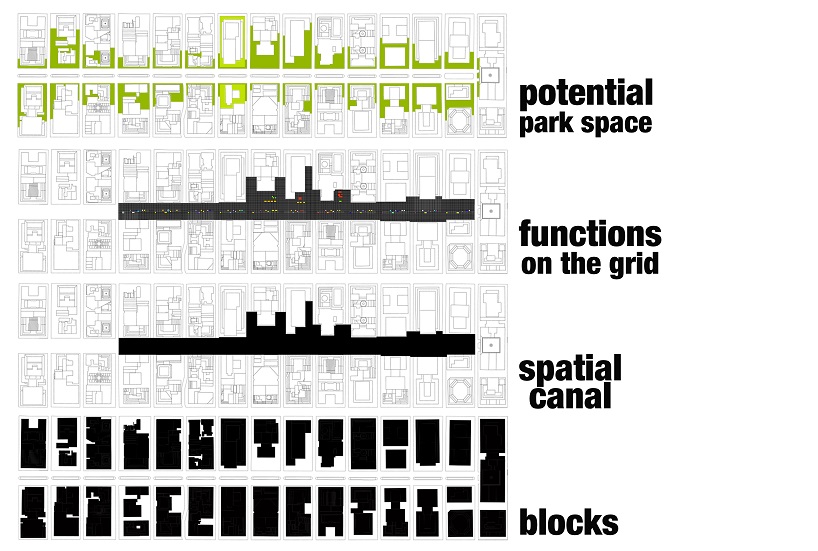
park avenue park layers

food park and reconstructed endemic biome scheme proposal

section views of tree-like forms
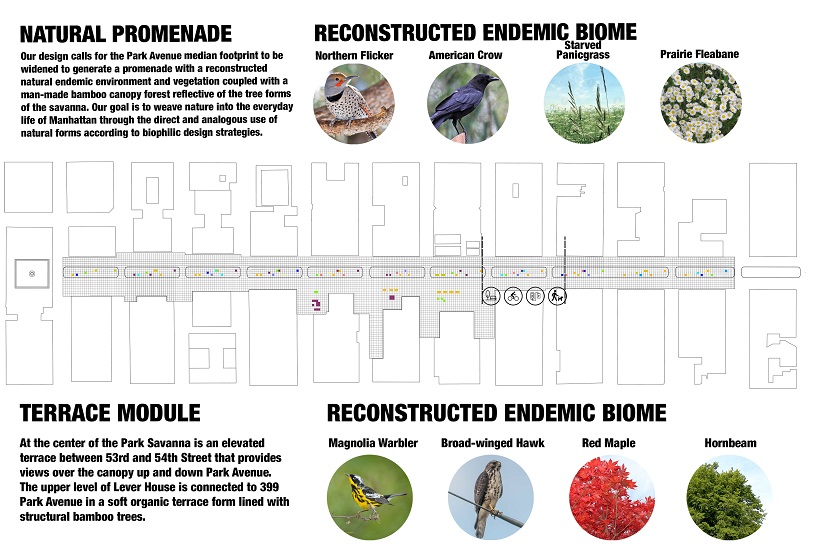
natural promenade and terrace module diagram
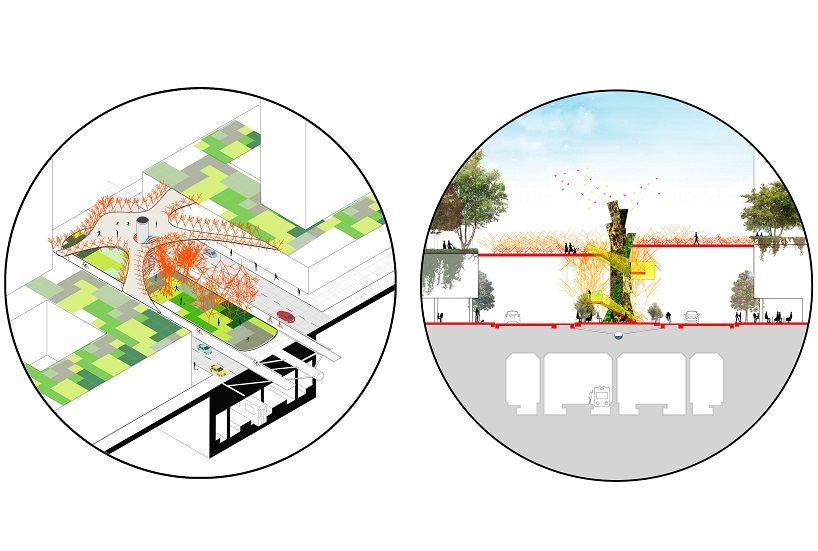
section
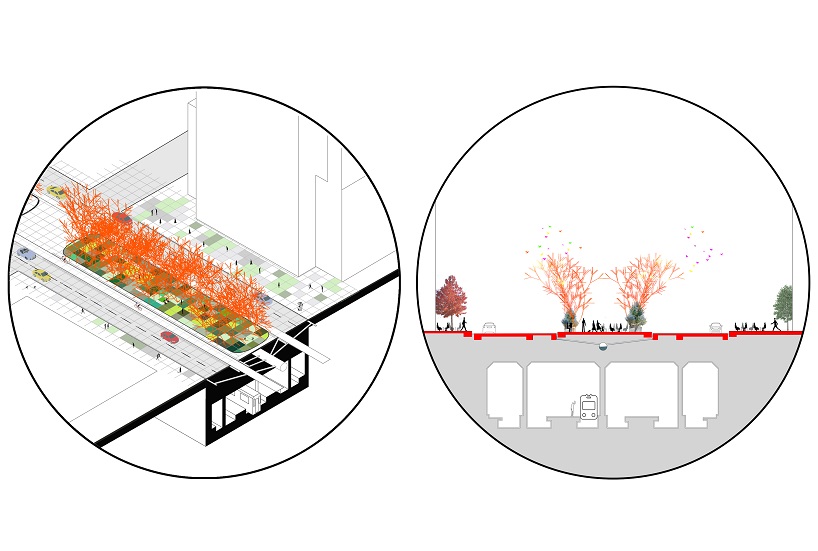
section
project info:
location: new york
architectural project & design: GAD & chelsea atelier
project team: gokhan avcioglu, ayhan ozan, gokhan karakus, seda tugutlu, cemal erol, can imamoglu, ensar kaya, presentation by dan
building type: recent, experimental, urban planning, public
year: 2018
status: study
designboom has received this project from our ‘DIY submissions‘ feature, where we welcome our readers to submit their own work for publication. see more project submissions from our readers here.
edited by: apostolos costarangos | designboom
